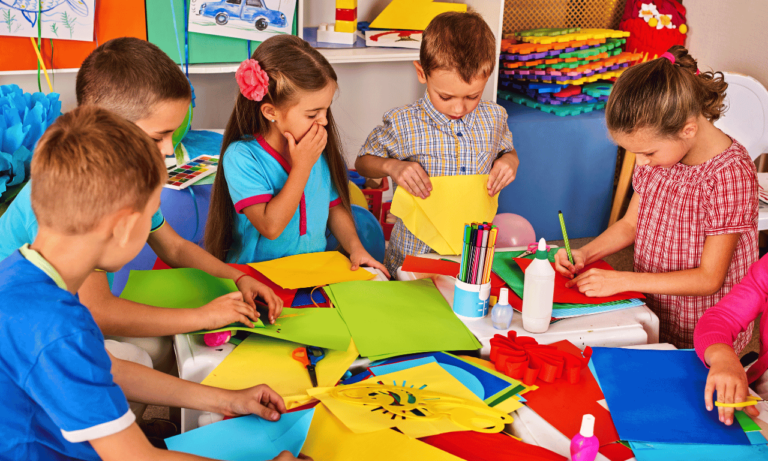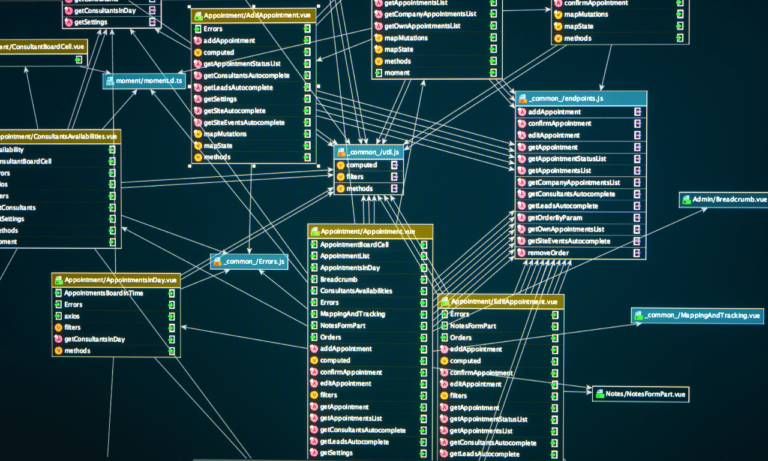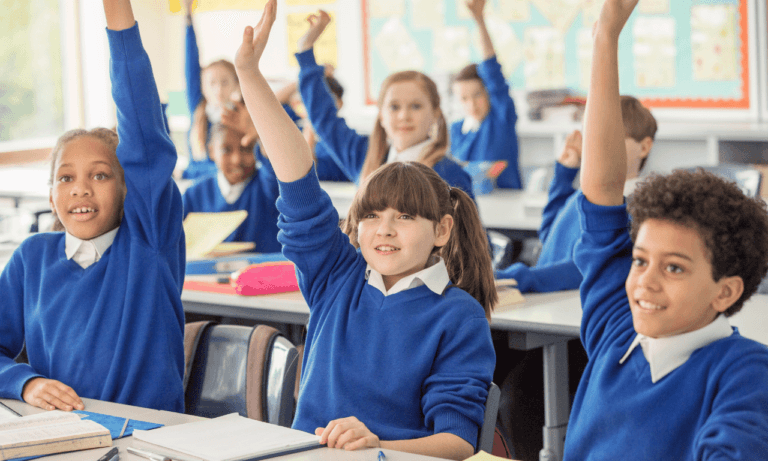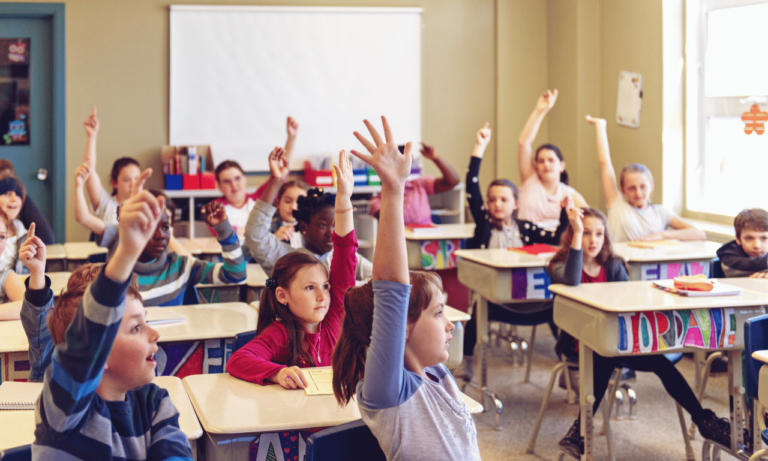Phone:
(+65)8319-0742
In the dynamic realm of education, the deployment of Modelling and Demonstration in Teaching is an undeniable cornerstone of effective teaching methods. Teachers across grades use these strategies to provide students with tangible representations of knowledge, bridging the gap between theory and practice. Whether itâs a science experiment unfolding before curious eyes or a historical event being reenacted, educational models and demonstrations bring lessons to life, dramatically enhancing the learning experience.
These teaching strategies don’t merely convey information; they invite students into a richer, more immersive understanding. When educators articulate their thinking aloud, pairing action with explanation, students gain insight into not just the “how” but also the “why” of various concepts. Logistics once murky become clear, making these educational techniques instrumental for cementing knowledge in young minds. This approachâs efficacy only strengthens with the adaptability it has shown, shifting smoothly from in-person to virtual classrooms during unforeseen events like the COVID-19 pandemic.
Key Takeaways
- Modelling and demonstration are time-tested, effective teaching methods that make learning interactive and engaging.
- Such teaching strategies provide a hands-on understanding of complex concepts, facilitating deeper student comprehension.
- Through these educational techniques, teachers articulate processes, making the invisible parts of thinking visible to learners.
- Modelling and demonstration adapt seamlessly to changes in teaching environments, including the necessary shift to virtual settings.
- These methods cater to students with various learning styles, reinforcing knowledge retention and application.
The Fundamentals of Instructional Modeling
As we delve into the core of instructional modeling, it’s essential to recognize its significance as a cornerstone among the various educational techniques for teachers. Integrating effective pedagogical strategies into the learning environment not only facilitates knowledge acquisition but also prepares students for real-world applications through practical, observed behaviors.
Understanding the Impact of Mirror Neurons in Learning
The biological foundation of instructional modeling lies within our brain’s mirror neurons, which play a pivotal role in learning by observation. This phenomenon underscores the value of pedagogical approaches that include modeling, as they activate these neurons, thus making the learning process more natural and intuitive for students.
Narration and Demonstration: Key Tools for Effective Modeling
Combining narration with demonstration serves as a dual-faceted tool in instructional modeling. Through narration, educators articulate the reasoning behind each step, thus offering a clear and verbalized path toward understanding complex tasks. Demonstration, in turn, provides a visual anchor, reinforcing the learning process through structured observation.
Interactive vs. Traditional Modeling: Engaging Students in the Process
Traditional approaches often cast students in the role of passive observers. However, interactive instructional modeling disrupts this pattern by encouraging students to ask questions, explore the ‘how’ and ‘why’ of each process, and engage directly in task replication. This interaction fosters a deeper connection with the material, thereby enhancing the educational experience.
| Aspect of Modeling | Interactive Modeling | Traditional Modeling |
|---|---|---|
| Student Engagement | High | Low |
| Role in Learning | Active Participant | Passive Recipient |
| Focus | Understanding Processes | Repeating Outcomes |
| Teacher’s Approach | Guide and Facilitator | Primary Actor |
| Outcome | Autonomous Learners | Dependent Learners |
In essence, instructional modeling isn’t just about execution but about cultivating a mindset geared towards learning. The shift from traditional methods to interactive and engaging pedagogical strategies represents a significant evolution in the realm of education, one that promises to yield lifelong learners well-equipped for the challenges of the future.
Modelling and Demonstration in Teaching: Classroom Techniques for Success

Effective classroom demonstration is much more than mere show and tell. It encompasses a rich repertoire of strategies that transform the educational environment and foster a stronger grasp of the material for students. To achieve educational success, teachers should integrate both best practices in teaching with learning demonstrations that cater to the diversity of learning styles in a single classroom setting.
Key to these demonstrations is the process of making the abstract tangible. By breaking down complex concepts into step-by-step procedures, teachers help students bridge the gap between theoretical knowledge and practical application. Emphasizing this element of instructional delivery allows for transparent communication of thought processes, where teachers narrate their actions, thereby demystifying the path to problem-solving.
- Preparation is vital – Prior to a classroom demonstration, effective educators anticipate obstacles and weave solutions into the instruction narrative.
- Clarity is crucial – Through clear, concise narrations, teachers explain the why alongside the how during demonstrations, aiding cognitive processing.
- Engagement is essential – Inviting students to participate, question, and emulate during learning demonstrations bridges comprehensions and encourages active learning.
Effective modelling is not a one-size-fits-all approach; it requires a careful consideration of the unique dynamics within each classroom. These methods, when employed thoughtfully, not only enhance the learning experience but also equip students with tools to become autonomous learners.
Ultimately, the goal of employing best practices in teaching through classroom demonstrations is to nurture a learning environment where students can thrive. By methodically incorporating learning demonstrations into lesson plans, educators expertly guide learners through a journey from curiosity to mastery, which is the hallmark of enduring education.
Pedagogical Approaches: From Theory to Practice
Bringing pedagogical approaches into the tangible realm of the classroom requires a blend of diverse effective teaching methods and established best practices in teaching. Let’s delve into the practical steps educators take to transform theoretical concepts into actionable learning experiences.
Preparation and Planning: The First Steps in Demonstrative Teaching
Effective teaching begins long before students enter the classroom. The rigorous preparation and planning period is a testament to the teacher’s commitment to the educational process. This phase involves identifying the objectives of the lesson, curating resources, and predicting potential challenges that may arise during the delivery of the material.
Encouraging Student Participation and Reflection Through Modelling
Student participation is invaluable in forming a dynamic learning environment. Through strategic modeling, educators foster a space where learners are not mere spectators but active contributors to the educational narrative. This engagement triggers reflection and metacognition, key elements for deeper understanding.
Teaching Complex Concepts: Worked Examples and Case Studies
Among the most effective teaching methods for clarifying intricate subjects are worked examples and case studies. The former breaks down processes into smaller, more digestible components, while case studies contextualize theory within the real world, providing students with a holistic view.
| Technique | Focus | Benefits |
|---|---|---|
| Worked Examples | Sequential Understanding | Reduces cognitive load, aids step-by-step comprehension |
| Case Studies | Application of Knowledge | Promotes critical thinking, provides practical scenarios |
Best practices in teaching evolve as educators refine their pedagogical approaches, always keeping the learner at the heart of the process. By fostering an environment where preparation meets active participation, we lay the foundation for a more engaged and enlightened future.
Maximizing Learning Through Educational Techniques for Teachers

Effective teaching strategies play a pivotal role in enhancing student learning and academic performance. In the quest to maximize learning, instructional modeling stands out as a dynamic and powerful approach. For educators, the ability to deploy a diverse array of educational techniques for teachers â each tailored to the unique needs of their students â is not just an option, but a necessity in the modern classroom.
One of the cornerstones of instructional excellence is the adaption of teaching methods based on student demographics, such as for English Language Learners (ELLs). Engaging these students with visual aids and culturally responsive materials can significantly improve their academic journey. Similarly, a robust approach often includes the execution of cloze activities, which promote critical thinking and contextual understanding, enhancing both language and subject matter proficiency.
- Physical Modeling for Geographic Processes
- Visual Aids to Support Conceptual Understanding
- Tailored Strategies for Diverse Learner Needs
- Cloze Activities for Language Development
- Explicit Classroom Routines for Structured Learning
Additionally, the intentional design of classroom routines helps in creating a structured learning environment where students can thrive. Such strategies encourage the development of good habits and discipline essential for educational progression. Moreover, providing students with visual examples of completed assignments can enormously benefit their understanding of project requirements and expected outcomes.
| Technique | Description | Benefits |
|---|---|---|
| Instructional Modeling | Using representational actions to teach specific skills or concepts. | Clarifies processes and enhances memory retention. |
| Visual Aids | Employing images and other visual tools to illustrate ideas. | Serves various learning styles and aids in concept retention. |
| Diverse Learner Adaptation | Customizing teaching strategies to meet different student needs. | Increases engagement and comprehension across student populations. |
| Cloze Activities | Fill-in-the-blank exercises that require contextual knowledge. | Improves language skills and reinforces content mastery. |
As educational landscapes continue to evolve, especially with the increasing necessity for virtual learning environments, the use of video explanations and demonstrations has become a staple. Through video modeling, teachers can bridge the physical distance, clearly communicating tasks and procedures, which in turn mitigates student confusion and enriches the educational experience.
Conclusion

As we look towards the future of education, effective teaching methods and innovative educational techniques remain paramount in delivering quality instruction. The impact of instructional modeling and classroom demonstration on student engagement and understanding cannot be understated. These foundational teaching strategies have proven to be instrumental in shaping environments conducive to active learning and critical thinking.
Central to these methodologies is the ability to create experiences that are not only informative but also inherently engaging, making abstract concepts tangible and relatable. Through the fusion of theory and practice, educators are able to facilitate instructional settings where visualization, narration, and interactivity play prominent roles.
The utilization of real-world scenarios and practical demonstrations has a profound impact on the way students process and internalize information. Educators who harness these techniques empower their learners to become autonomous, reflective, and self-motivatedâqualities essential for the modern world.
| Aspect of Teaching | Benefits | Implementation in Instruction |
|---|---|---|
| Instructional Modeling | Enhances understanding through visual learning | Real-time problem solving and analysis |
| Classroom Demonstration | Brings abstract concepts to life | Interactive and dynamic presentations on key topics |
| Active Participation | Promotes engagement and retention | Student-led discussions and peer teaching |
| Narration and Visualization | Facilitates multi-sensory learning experiences | Use of storytelling and visual aids to reinforce concepts |
In conclusion, as educators continue to adapt and refine their craft, the incorporation of these robust teaching paradigms serves not only to enhance the immediate learning experience but also to pave the way for students to develop into introspective and informed individuals. Through a commitment to educational excellence, today’s teachers are nurturing a new generation of enlightened minds ready to face the challenges and opportunities of an ever-evolving world.
Contact Information for Further Educational Resources
As educators strive for excellence in the classroom, the integration of social emotional learning methodologies into teaching practices has proven to be transformative. To support such initiatives, myriad SEL resources for teachers have emerged, brimming with innovative strategies for enhancing mental health and fostering holistic development in students. By tapping into these resources, teachers infuse their instructional repertoire with new dimensions of empathy and student engagement that are critical in todayâs educational landscape.
One such organization at the forefront of SEL is Move This World, which specializes in curating customized programs tailored to the unique dynamics of each educational setting. Complementing these resources, SEL Grants offer financial support to educators aiming to implement comprehensive Social Emotional Learning programs within their schools. These grants are pivotal in bridging the gap between limited school budgets and the desire to provide students with a rich, emotionally supportive learning environment.
Beyond funding, the field also benefits from the sharing of successful case studies and the use of advanced visualizer technologies which can significantly uplift education techniques for teachers. Educators looking to elevate their craft with these tools may reach out to sector leaders for guidance and advice. By engaging with these experts and integrating their insights, along with available technologies, teachers can hone their strategies to effectively model and demonstrate concepts, leading to enhanced student outcomes and a more profound educational impact.
FAQ
What is Modelling and Demonstration in Teaching?
Modelling and demonstration are teaching strategies that involve showing students how to perform a task or understand a concept through example and guided practice, allowing them to observe and replicate the process.
How do mirror neurons impact learning through instructional modeling?
Mirror neurons allow students to learn by observation as they are activated when individuals perform an action or watch someone else perform it, making modeling a powerful educational technique, especially in social emotional learning.
What is the role of narration in effective modeling?
Narration during modeling helps articulate the thought processes and decision-making behind actions, offering a verbal roadmap to students, which enhances their understanding and supports their journey toward autonomy.
How does interactive modeling differ from traditional modeling?
Interactive modeling involves students in the learning process by prompting them to actively observe, question, and mimic the demonstrated skills, thus transitioning their role from passive recipients to active participants in learning.
What are some classroom techniques for successful modeling and demonstration?
Successful classroom techniques include breaking down complex processes into manageable steps, narrating thought processes, allowing for questioning, and encouraging student interaction and practical application.
Why is preparation and planning important in demonstrative teaching?
Meticulous preparation and planning are crucial for demonstrative teaching as they ensure the teacher can convey concepts clearly, anticipate potential questions or problems, and create conducive learning experiences.
In what ways can modelling encourage student participation and reflection?
By using modelling to dissect complex ideas and involving students in worked examples or case studies, educators promote an environment where students reflect on the material and think meta-cognitively about their learning.
What are some effective strategies for teaching complex concepts?
To teach complex concepts effectively, educators can use worked examples, case studies, and a step-by-step approach to model thinking processes and solutions, thereby promoting better understanding and retention.
How can educational techniques be maximized to enhance learning for all students?
Teachers can employ a variety of educational techniques such as visual aids, interactive modelling, and catered activities like cloze exercises to address diverse learning needs and maximize comprehension for all students.
What additional SEL resources can teachers access to support instructional modeling?
Teachers can access SEL resources from organizations like Move This World or seek SEL Grants to incorporate social emotional learning into their classrooms more comprehensively, enhancing the support for instructional methods that contribute to students’ holistic development.
Source Links
- https://www.movethisworld.com/classroom-resources/teacher-modeling-strategies-in-the-classroom/
- https://geography.org.uk/ite/initial-teacher-education/geography-support-for-trainees-and-ects/learning-to-teach-secondary-geography/ite-trainees-classroom-practice/explicit-teaching/modelling-and-demonstration/
- https://www.teachhub.com/teaching-strategies/2020/08/modeling-teaching-strategy-examples-for-english-language-learners/

















